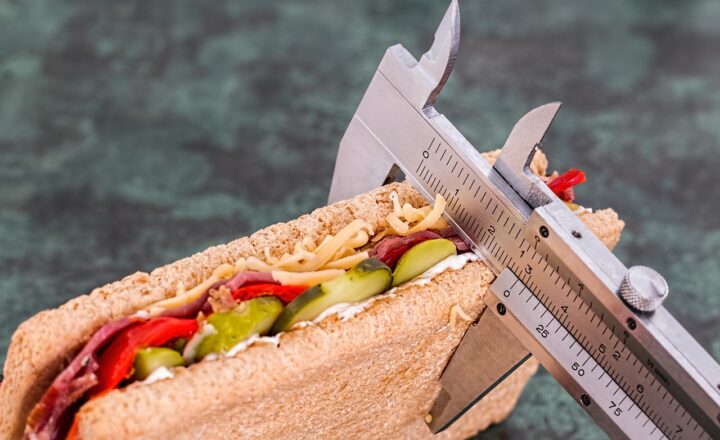How to Determine Your Ideal Caloric Intake for Weight Loss Success
November 14, 2024

When it comes to weight loss, understanding caloric intake is crucial. With the multitude of dieting fads and nutrition advice circulating the internet, it can be challenging to discern what works effectively for individual needs. This article serves as a comprehensive guide to help you accurately determine your ideal caloric intake for successful weight loss.
1. The Basics: What is a Calorie?
Before diving into how to calculate your caloric needs, it’s essential to understand what a calorie is. A calorie is a unit of measurement used to quantify the amount of energy provided by food and beverage consumption. To maintain or lose weight, understanding the balance between calories consumed and calories burned is key.
Understanding this balance helps inform the principle of energy deficit, which states that to lose weight, you must consume fewer calories than your body expends.
2. Factors Affecting Caloric Needs
Your ideal caloric intake can vary significantly from someone else’s based on several factors, including:
- Age: Metabolism generally slows down with age, thus affecting caloric needs.
- Gender: Men typically require more calories than women due to differences in muscle mass and metabolic rate.
- Weight: Heavier individuals often require more calories to maintain their weight, and thus may need to adjust their intake for weight loss.
- Height: Taller people usually burn more calories than shorter individuals, leading to different caloric needs.
- Activity Level: Sedentary individuals require fewer calories than those who are active or engage in regular exercise.
Understanding these factors is essential for tailoring a weight loss plan to your personal health requirements.
3. Calculate Your Basal Metabolic Rate (BMR)
Your Basal Metabolic Rate (BMR) is the number of calories your body requires at rest to maintain basic physiological functions, such as breathing, circulation, and cell production. You can calculate your BMR using the Mifflin-St Jeor equation:
– For men: BMR = 10 * weight (kg) + 6.25 * height (cm) – 5 * age (years) + 5
– For women: BMR = 10 * weight (kg) + 6.25 * height (cm) – 5 * age (years) – 161
This equation provides a good estimate of your BMR, which can be adjusted based on activity levels to find your Total Daily Energy Expenditure (TDEE).
4. Adjusting for Activity Level: Total Daily Energy Expenditure (TDEE)
To find out how many calories you need daily, multiply your BMR by an activity factor that reflects your lifestyle:
- Sedentary (little or no exercise): BMR * 1.2
- Lightly active (light exercise/sports 1-3 days/week): BMR * 1.375
- Moderately active (moderate exercise/sports 3-5 days/week): BMR * 1.55
- Very active (hard exercise/sports 6-7 days a week): BMR * 1.725
- Super active (very hard exercise, physical job, or training twice a day): BMR * 1.9
Calculating your TDEE will give you a clearer picture of your daily caloric needs based on your lifestyle.
5. Establishing a Caloric Deficit for Weight Loss
To lose weight, you’ll need to establish a caloric deficit. A common recommendation is to decrease your caloric intake by 500 calories per day to lose approximately 1 pound per week, as 3,500 calories roughly equals 1 pound of fat. However, this figure can vary based on individual differences.
It’s essential to approach weight loss safely—caloric intake shouldn’t drop below 1,200 calories for women and 1,500 for men unless under medical supervision.
So if your TDEE is 2,500 calories and you wish to lose weight effectively:
- Daily Caloric Intake = TDEE – 500 = 2,000 calories
6. Monitoring and Adjusting Your Caloric Intake
After you’ve established your target caloric intake, it’s important to monitor your progress. Keep track of your weight, measurements, and how you feel overall. If you find you’re not losing weight over several weeks, you may need to adjust your caloric intake or increase physical activity. Similarly, if you’re losing weight too quickly, it might be wise to increase your intake slightly.
Maintaining a flexible approach allows for adjustments as needed, ensuring sustainability in your weight loss journey.
7. Macronutrient Ratios: Not Just Calories Matter
While understanding caloric intake is paramount, focusing on macronutrients (proteins, fats, and carbohydrates) is also essential in your weight loss plan. A balanced intake will improve satiety and overall health. Here’s a basic macronutrient ratio to aim for:
- Proteins: 20-30% of total daily calories – essential for muscle maintenance and recovery.
- Fats: 20-35% of total daily calories – necessary for hormone production and nutrient absorption.
- Carbohydrates: 45-65% of total daily calories – primary energy source for daily activities.
By focusing on quality food choices within these macronutrient groups, you’ll likely experience better results in your weight loss efforts.
8. Stay Hydrated and Monitor Other Influences
Never underestimate the importance of hydration and holistic lifestyle choices in your weight loss journey. Drinking adequate amounts of water can aid in satiety, energy levels, and overall well-being. Additionally, sleep, stress management, and nutrient timing can significantly affect your caloric needs and weight loss success.
Conclusion
Determining your ideal caloric intake requires understanding your body, lifestyle, and health goals. By calculating your BMR, adjusting for activity level, and creating a sustainable caloric deficit, you can effectively navigate your weight loss journey. Remember, this process isn’t just about calories; a comprehensive approach that includes macronutrient balance, hydration, and mindful choices will lead to lasting success.
Take charge of your weight loss journey today, focusing not just on the numbers, but on cultivating a healthy lifestyle that supports not only your physique but your wellness as a whole.








